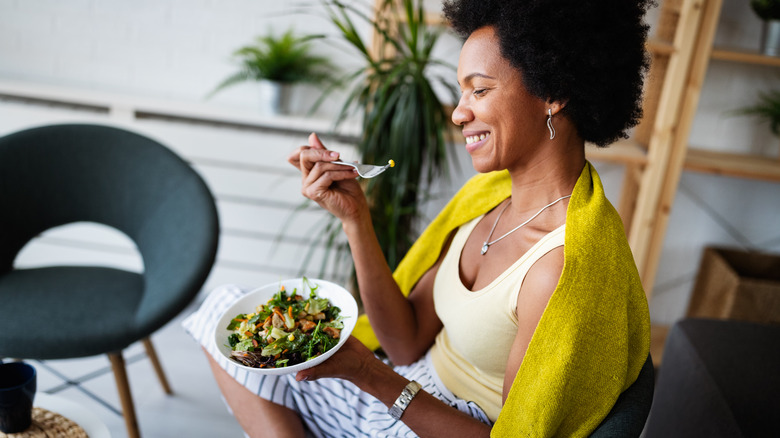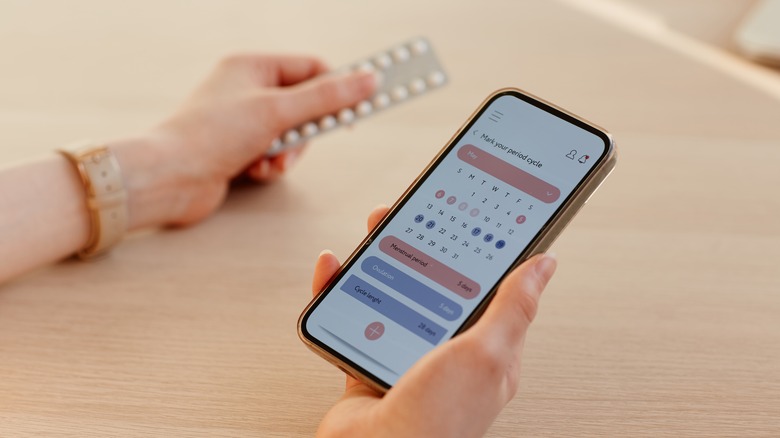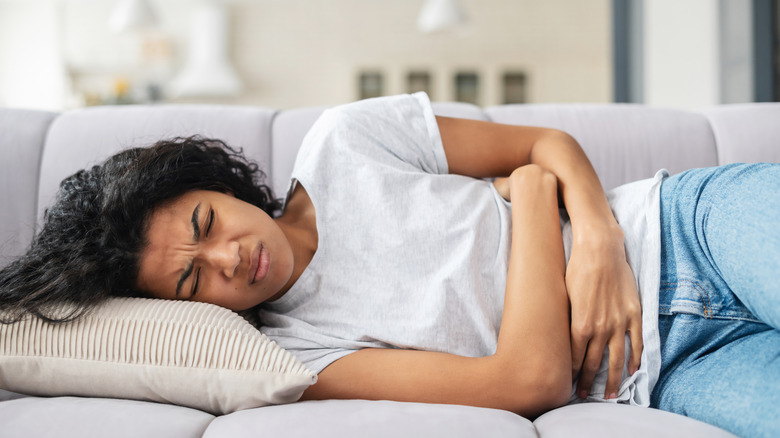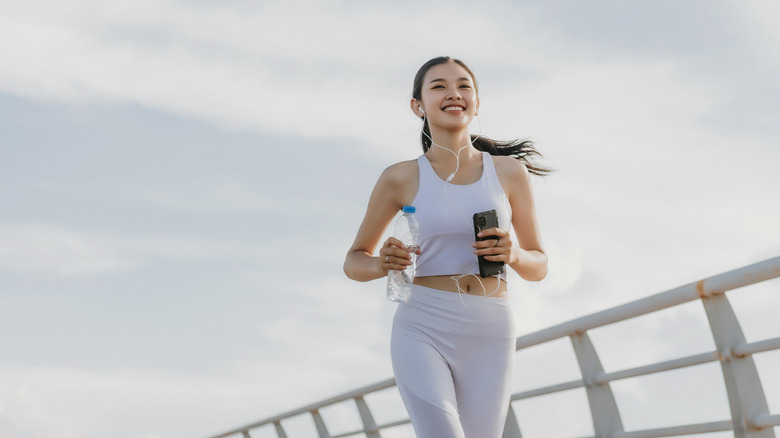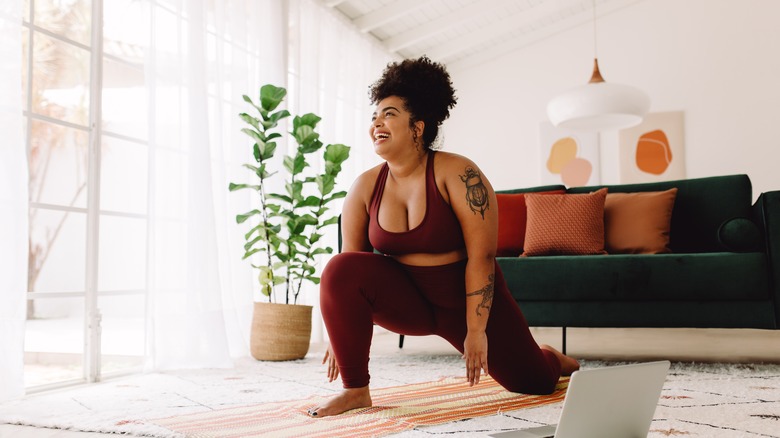Cycle Syncing Could Completely Change Your Relationship With Nutrition - Here's How
With a menstrual cycle that dominates the entire month, you may find that even when you make plans, your hormones simply laugh, fluctuating up and down on a whim. A normal menstrual cycle can last anywhere from 24 to 38 days, dominating most of that time. If your period comes regularly, then you know to block out a few days aside for lying on the couch with a heating pad, some snacks, and your favorite comfort movie.
Yet aside from those few days during your period, your energy levels are changing; even when not bleeding, you may not have the strength to go about your life as normal. One week, you may be able to withstand a tough workout, but the next, you can only do a bit of gentle yoga. Adapting your life to the phases of your menstrual cycle can help you plan your calendar better, allowing you to utilize the changing stages to the best of your ability.
Cycle syncing is more than simply allowing your period to inspire your workout routine – your entire menstrual cycle can help you better dictate what you eat. This doesn't mean that you can't enjoy the "unhealthy" snacks you like; however, if you like to eat healthily or experience painful symptoms throughout your cycle, knowing what to eat can give you a more comfortable and productive experience.
What are the four menstrual phases?
Before deciding on grocery lists and workouts for each phase of your cycle, it's important to understand what the phases are and how exactly they affect you. Although everyone's experience with their cycle is different, there's still a baseline on what to expect. Apps like Flo and Clue can help you safely track the exact days of your cycle. The menstrual phase, when your period arrives, comes first. It is often marked by headaches, cramps, lower back pain, and breast tenderness, as well as bloating and mood swings.
While the menstrual phase is still ongoing, the follicular phase begins. Starting on the first day of your period, it lasts for about two weeks, ending when you begin ovulation. At this time, your estrogen levels will start to increase, which will eventually trigger the start of the ovulation phase. When your estrogen levels get higher, so will your energy. The peak of your estrogen level will occur during ovulation when your energy is at its highest. During ovulation, the ovary sends a mature egg to the uterus via the fallopian tube so it can be fertilized. As the shortest phase, ovulation can last from about 16 to 32 hours.
The last phase of the cycle is the luteal phase, when PMS symptoms such as bloating, breast swelling, food cravings, and weight gain may occur. Lasting anywhere from 11 to 17 days, the luteal phase causes your estrogen and progesterone levels to decrease, signaling your impending period.
Go easy on yourself during the menstrual phase
Listening to your body during one of the most painful parts of the menstrual cycle can reduce the symptoms you experience and boost your mood even though your hormones have dropped. During your menstrual phase, eat a diet filled with iron, vitamins, and fatty acids. It's tempting to eat sweet, greasy food, but if your period is already painful, some of your favorite foods might make your menstrual cramps more severe. Focus on eating things with iron and vitamin C — the latter to increase your iron absorption and the former to replace the iron you lost while bleeding.
While the last thing you want to do when your mood is low and you're bleeding is exercise, the dopamine rush you'll experience afterward is completely worth it. Exercising can also help with the bloating and nausea you might feel during your period, as well as decrease your blood flow. After the worst of your pains have subsided, do light exercises such as walking, yoga, swimming, or Pilates. These are easy to complete, even when decreased hormones have shot your energy level. The amount of exercise you do will probably be significantly less than your typical workout routine, but simply getting up and moving is important.
Take things up a notch during the follicular phase
As you get deeper into the follicular phase, you'll notice that your energy levels will begin to pick up. This increase is triggered by rising estrogen levels which occur as the ovaries begin follicle production. Eating more fiber and complex carbs will give your body an extra energy boost during this phase. Vegetables that contain carbs like Brussels sprouts, broccoli, squash, and carrots will boost the increasing estrogen. You can also eat foods that will help to balance your hormones — quinoa, pumpkin seeds, avocados, and chickpeas are great options.
Since the follicular phase starts during the menstrual phase, the first half of it can be dedicated to gentle exercises like jogging or yoga. Once your period is over, you can use your newfound energy to heighten your cardio exercises. Try running, dancing, or even boxing. If you're feeling it, you can also make your workouts more intense with HIIT.
Focus on your diet during the ovulation phase
Although there are many factors outside of diet that must come together when you're trying to conceive, what you eat can still help your chances. Fertility diets for women trying to conceive often consist of foods high in vitamin B. Things like Brussels sprouts, wild salmon, carrots, and mushrooms are rich in vitamin B, which can help the release of your egg when trying to get pregnant and the implantation of the egg after fertilization. Even when not trying to conceive, eating foods with vitamins B and C, as well as folic acid and zinc, help promote normal ovulation.
With your estrogen levels at their highest, the ovulation phase gives you the opportunity to continue with the HIIT exercises you started during the follicular phase. Utilize this energy to try out kickboxing or rowing. If you experience bloating or cramps during the ovulation phase, or you're looking to conceive, try something gentler. Revert back to the exercises you did during the menstrual phase, such as Pilates, cycling, walking, or yoga.
Wind things down during the luteal phase
If you haven't gotten pregnant during the ovulation phase, the luteal phase will bring about PMS symptoms like food cravings, mood changes, bloating, and trouble sleeping. During this time, avoid foods that will worsen these symptoms and strain the liver, such as excessive salt and lots of sugar, alcohol, and caffeine. Replace your favorites with healthier alternatives that satisfy your cravings without making symptoms more intense. Swap out your usual snacks for things like dark chocolate, matcha, and kettle-baked chips.
To keep your progesterone levels up, which helps with mood swings, eat foods like grass-fed beef, nuts, oats, shrimp, and peppers. Eating foods with plenty of magnesium and healthy fats can help with the energy loss that will kick in. During this phase, your energy will probably be at an all-time low. Do light or moderate exercises with room for plenty of breaks. Go for long, scenic walks, swim, or take a bike ride.
